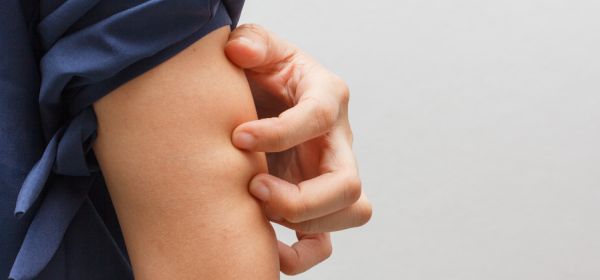Australia is home to some of the world’s most venomous creepy crawlies. With summer on its way, there’s bound to be a few more critters moving around – and a few bug bites too. Not all insects are created equal; the stings and bites of most bugs are fairly harmless, but some can be of more concern and require medical attention. Here is a simple guide to assist you in identifying bug bites and how to treat them.
Bed bugs
These small insects feed on your blood, often causing itchy bites. They tend to live in your clothes, bedding, furniture and luggage. They do not transmit diseases but they can be annoying and difficult to eradicate.
Signs include:
- waking up with bites
- brown spotting (beg bug faeces) or blood spots on your bedding
- a musty, sweet smell (common with large infestations).
Some people don’t show any symptoms of bed bug bites but many develop itchy red spots, often on the legs, arms and shoulders. These symptoms should clear up on their own, though the use of steroid creams and oral antihistamines can help.
Mosquitoes
While annoying, the Aussie ‘mozzie’ is a generally harmless insect, whose bites typically cause itchy red spots. Some people may have allergic reactions to bites. In some cases mozzies can spread serious infectious diseases. You should see your doctor if you develop a rash, fatigue and flu-like symptoms (such as chills, fever, headaches and joint pain). Mozzie bites can be managed by washing the area with antiseptic and avoiding scratching the bite, which can leave a wound that may become infected. You can lessen your chance of being bitten by staying inside in the early morning and dusk periods, along with using insect repellents.
Spiders
It can be difficult to tell whether a spider is dangerous or not. Some spider bites are mild while others require immediate medical treatment. Spiders love to hide in sheltered outdoor areas, such as tool sheds and cubby houses.
Medically, spiders are classed into three groups:
- big black spiders (e.g. funnel web or black widow spiders)
- redback spiders
- all other spiders.
A bite from a big black spider is cause for immediate medical attention. While redback spider bites can cause significant pain, they aren’t typically life threatening. Only those who present with allergic reactions require medical attention. All other Australian spiders are more or less harmless and do not require further medical treatment.
The treatment for most spider bites usually involves a cold compress over the bite area, along with an anti-sting cream. If someone is bitten by a big black spider, it is crucial to apply pressure to the area, lower the limb, immobilise the victim and wait for an ambulance.
Sea creatures
The sea is full of stringing critters and all along the Australian coast, there a variety of creatures for which you need to be on the look out.
Bluebottle: the most common of jellyfish stings. If stung by most jellyfish, wash of remaining tentacles with seawater or carefully pick them off. Immerse the sting in hot water for 20 minutes or apply an ice pack for 10 minutes. Seek medical attention if symptoms worsen.
Never rub sand, pour soft drink or urinate over any jellyfish sting.
Box jellyfish and Irukandji: the most dangerous jellyfish strings. Medical treatment should be administered as soon as possible so it is necessary to call an ambulance and while you wait for it to arrive, pouring vinegar over the skin to deactivate the sting. In some cases CPR may be required.
Never substitute vinegar with methylated sprits or alcohol as these will make the injury worse.
Blue-ringed octopus, sea snake and coneshell: Bites from these creatures are very dangerous and medical attention should be sought immediately. Apply pressure to the area, keep the person calm and call for an ambulance. CPR may be required.
Ticks
These critters can attach to your skin when you’re wandering around in the bush. Most tick bites aren’t serious, although some ticks are dangerous because they carry diseases. Once a tick latches on, it can burrow into the skin and feed on your blood. When removing a tick, it’s important not to grab the tick by the body, apply methylated spirits, nail polish or use a lighted match or cigarette. Try to grab it as near to the head as you can and ease it out. Once the tick is out, apply antiseptic cream. Bites can remain itchy for several weeks. Medical attention may be necessary if symptoms develop or worsen. You can avoid ticks by wearing light-coloured clothing, tucking your trousers into your socks and using an insect repellent containing diethyltoluamide (DEET) or picaridin to skin and clothing.
Have you been bitten but don’t know by what? This government-supported symptom checker can help you identify a bite or sting and advise you on the proper treatment.
Related articles:
Watch out for redback spiders this season
Countries you’re most likely to get sick
Should you be concerned about Zika?

